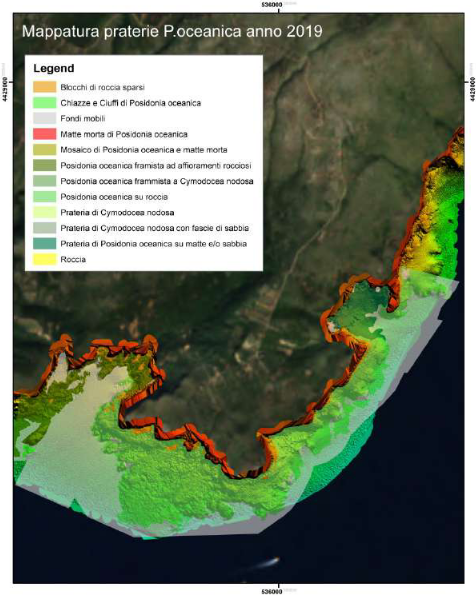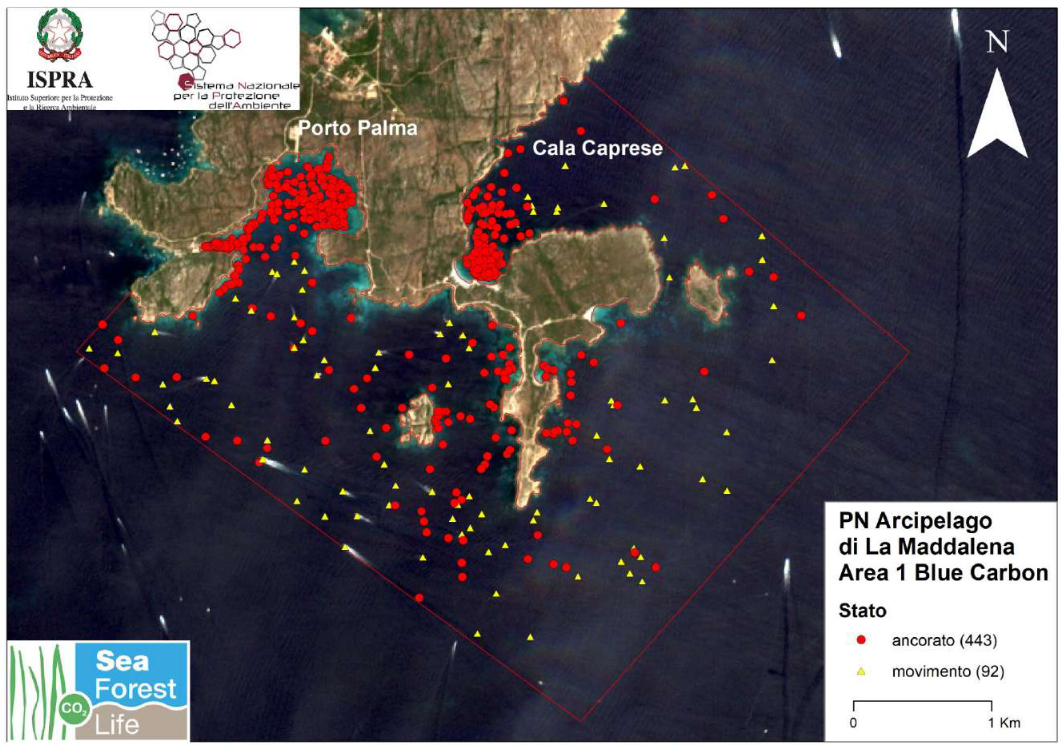The first results of the SeaForest LIFE project are now available
Under Action A1.1, the assessment of the extent of the habitat in the Blue Carbon study areas was carried out through the analysis of high-resolution and medium-resolution multispectral satellite images. Using the satellite images we could detect the presence and extent of seagrass meadows with different degrees of density and coverage (<25% to 100%) in the study areas. These systems, together with the in situ observations, represent powerful tools to map the extension of the Posidonia oceanica meadows minimizing the CO2 emissions related to the in situ survey activities. This Remote Sensing analysis activity was mainly performed by qualified ISPRA researchers, with the support of the external service of the University of Calabria Spin-off “3D Research”, which mainly dealt with the water column correction procedure. Maps of P. oceanica meadows in the Blue Carbon areas have been updated (from 1999 to 2019).
From the point of view of variations, slight reductions in the areas covered by P. oceanica were found in all Blue Carbon areas in the three National Parks (Parco Nazionale dell'Arcipelago di LaMaddalena, Parco Nazionale dell'Asinara, Parco Nazionale del Cilento, Vallo di Diano e Alburni). In addition, for all the study areas, the information layers to estimate the carbon storage in P. oceanica have been prepared using the Invest Model (Natural Capital Project).

At the same time, a cartographic study has been carried out in order to quantify the pressure induced by the anchorage of pleasure boats on P. oceanica meadows in the investigated Blue Carbon areas. This survey was carried out using semiautomatic and automatic boat recognition procedures. The acquired data enabled us to quantify the level of pressure exerted by pleasure boating on the Blue Carbon P. oceanica habitat.
The preliminary results have pointed out that the investigated Blue Carbon areas represent, in the three National Parks, the most frequented areas for recreational boating. In these areas there are a lot of boats anchoring on P. oceanica habitat, leading to a foreseeable impact and degradation on the conservation status of the seagrass meadows with possible negative effects on the Blue Carbon production and CO2 storage capacity.

The full report has been uploaded to the Products section of our website and is available here.


